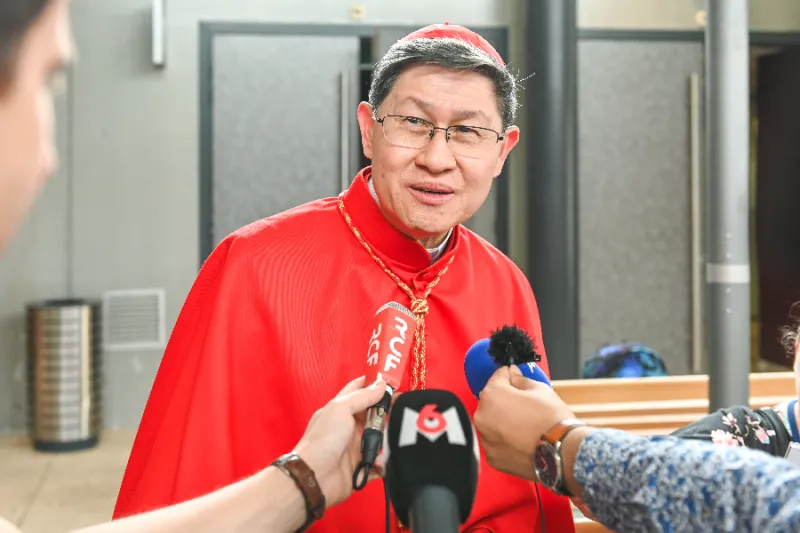
Rome Newsroom, May 26, 2022 / 09:40 am (CNA).
Cardinal Luis Antonio Tagle has said that the Church needs to support missionary dioceses with expertise to implement the sex abuse prevention protocols mandated by the pope.
The prefect of the Vatican Congregation for the Evangelization of Peoples said in an interview with a French television station that his dicastery was working to “follow up” with Catholic bishops’ conferences on their abuse prevention measures.
“Maybe in established churches, it is easier for them to form the committees, the commissions, because then you have trained people,” Tagle said.
“And this is where we need to assist the young churches because some of them are just developing … They need psychologists. They need canon lawyers.”
He added: “And this is where also the universal Church would help each other. Those with expertise can help form the human resources in other parts of the world.”
Tagle said that he had seen the need to support developing dioceses without as many resources after his dicastery followed up and asked bishops’ conferences to submit what they had prepared in response to Pope Francis’ mandate to start writing protocols in line with what was required by the motu proprio Vos estis lux mundi.
Last month, Pope Francis also asked the Pontifical Commission for the Protection of Minors to produce an annual report on what the Catholic Church is doing around the world to prevent the abuse of minors and vulnerable adults.
Cardinal Tagle spoke during a 30-minute sit-down interview with the television station KTO published on YouTube on May 25.
In the interview, the cardinal also addressed the issues of poverty, the Ukraine war, and the beatification of Blessed Pauline Jaricot, which he presided over on May 22.
When the Filipino cardinal was asked about his tendency to get emotional and shed tears during his speeches, Tagle replied: “Well, I guess you know, shedding tears is part of human experience.”
“When people are in love, they shed tears. When they are happy, they shed tears. When they suffer, they shed tears. So tears is one of the languages that can speak of many human situations, you know?”
The 64-year-old former Manila archbishop added: “I don’t know if I am just emotional, but I guess when I am in a situation, I allow myself to be affected … But I’m not always crying … Sometimes I laugh too.”
If you value the news and views Catholic World Report provides, please consider donating to support our efforts. Your contribution will help us continue to make CWR available to all readers worldwide for free, without a subscription. Thank you for your generosity!
Click here for more information on donating to CWR. Click here to sign up for our newsletter.




Leave a Reply